LG M3 OLED review: The wireless TV future is here
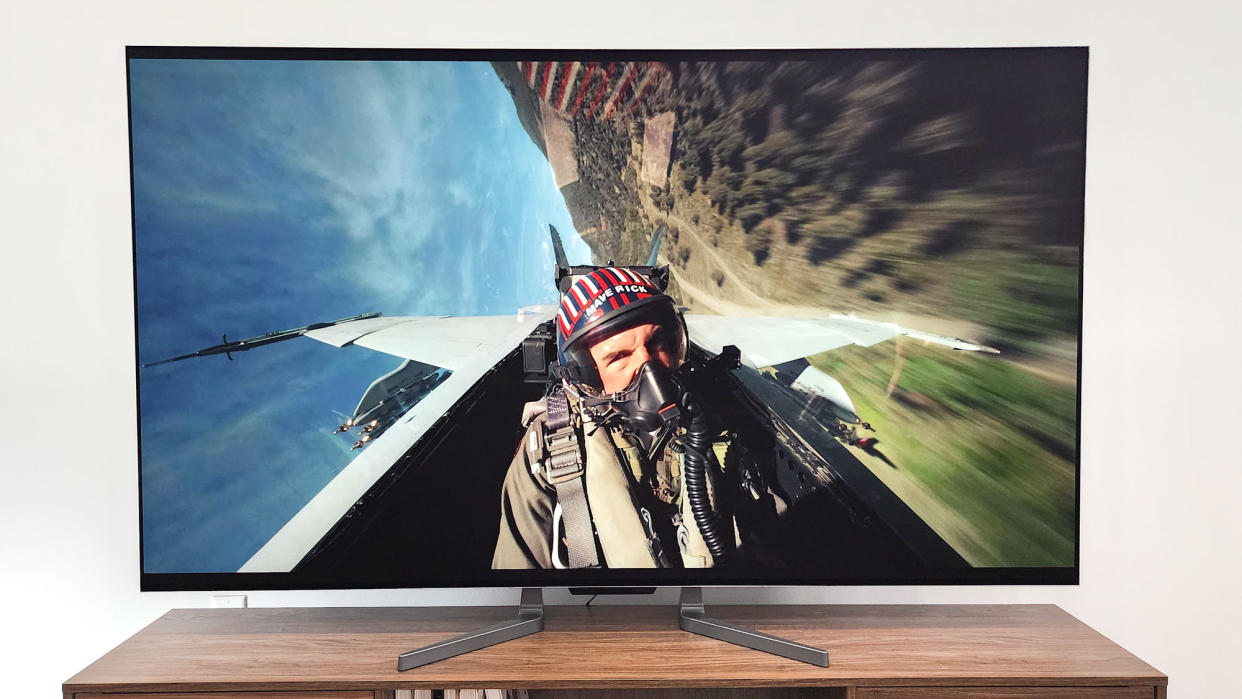
LG OLED evo M3: Specs
Price: $4,999.99
Screen size: 77 inches
Model: OLED77M3PUA
Resolution: 3,840x2,160
HDR: HDR10, HLG, Dolby Vision
Refresh Rate: 120 Hz
Ports: 3 HDMI 2.1, 2 USB
Audio: 60W
Smart TV Software: webOS 23
Size: 64.4x39x1 inches
Weight: 80.4 lbs.
With the LG M3 OLED, LG is offering us a real-world example of a far-off science fiction fantasy: It’s a TV that’s indistinguishable from a wall, and is designed to be as wireless as possible. Position it correctly near a power outlet, mount it on the wall, and watch or play whatever you want without a single cable, cord, or wire distracting you from the screen.
The future isn’t all the way here yet, so a few caveats with LG’s methodology may prevent the M3’s wirelessness from wowing you. And its innovations don’t come cheap: The smallest M3 (which, at 77 inches, isn’t small) starts at $4,999.99, and prices skyrocket from there.
But considering that you get a (mostly) outstanding picture as part of the deal, chances are you won’t complain too much. Assuming you can afford the privilege and your living room is set up to facilitate it, you will find that the M3 is one of the best TVs you can buy and a great luxury alternative to the new LG C4 OLED.
LG OLED evo M3 review: Pricing and availability
The M3 is LG’s most expensive TV, as well as one of the priciest in its class currently on the market. The prices for the three available sizes are as follows:
LG OLED77M3PUA (77-inch): $4,999.99
LG OLED83M3PUA (83-inch): $7,999.99
LG OLED97M3PUA (97-inch): $29,999.99
We evaluated the 77-inch M3, though as the hardware in the larger models is practically identical, we expect them to offer similar performance.
The M3 is expected to be for sale until at least the fall of 2024, at which point it may be replaced by an M4 model utilizing more of LG’s next-generation advancements, though its overall design should remain the same.
LG OLED evo M3 review: TV design and Zero Connect Box
Although there are a couple of key differences we’ll get to shortly, the M3 closely resembles the high-end-but-wired LG G3 OLED TV. Measuring only 1 inch at its thickest point and with a glimmering silver bezel outlining the 64.4x39-inch screen, it seems to have been built for sleekness. Looks are a bit deceiving here as the set weighs just over 80 pounds is unavoidable given its size — definitely get some help setting it up.
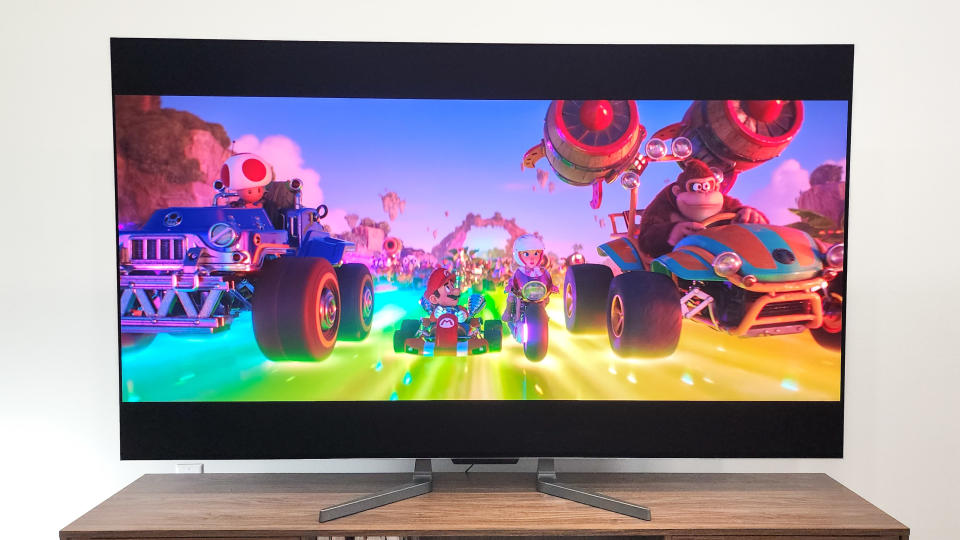
That there’s no blemish from any additional adornments on the front or the back, except for the under-the-IR-receiver button, which allows for one-touch control of Power, Input, Volume, and Channel commands, is not accidental. After all, the M3 is designed for hanging on the wall. To that end, it doesn’t even ship with a stand. You can, however, set it up with a universal model if you want it on top of your entertainment center. (We used an SVC Stand V2 LG provided us for this review.)
Ideally, you’ll treat the M3 as a work of art (similar in many ways to Samsung The Frame) and admire it by wall-mounting it using the 300x300mm VESA holes. Except for the power cable which connects to the bottom center of the TV, you can revel in its lack of all wires and cords.
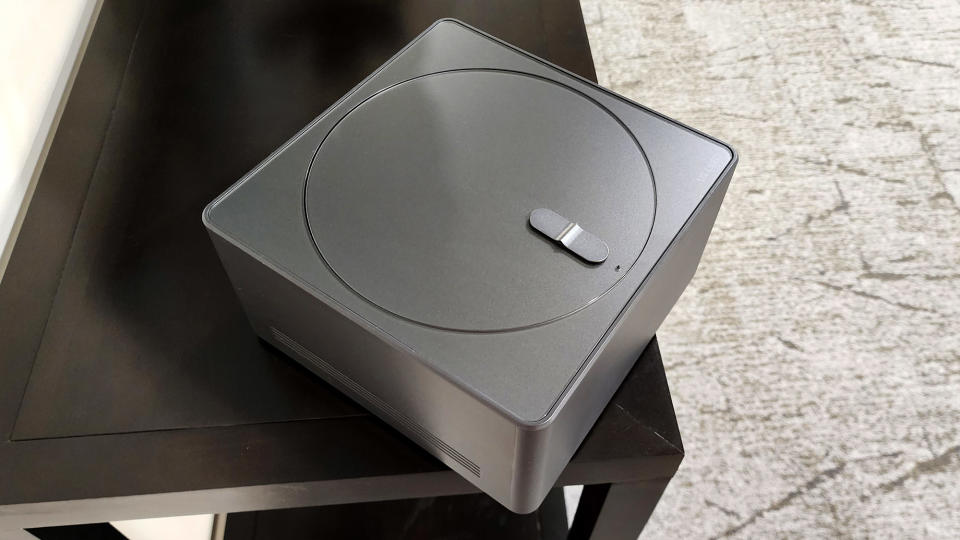
So how did we go from tons of cords to just one? LG achieves this with what it calls the Zero Connect Box, a satellite unit (measuring 9.4x9.2x4.6 inches) that contains all the usual ports found on a TV and projects all signals from cable, apps, and connected devices to the M3 from up to 30 feet away. This lets you keep the part of your A/V setup you watch sparkling clean and place all the messy additional cables and devices somewhere easier to access (and harder to see).
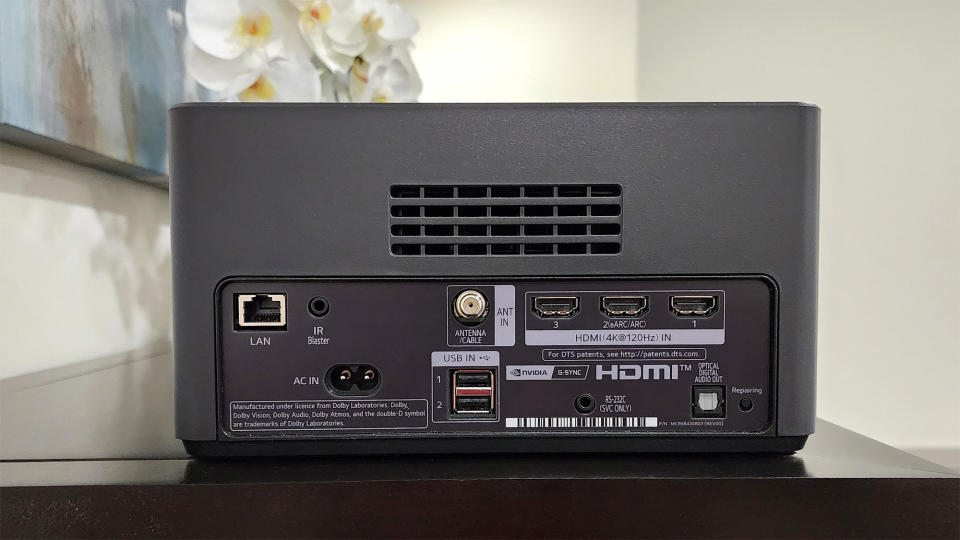
This doesn’t come without headaches, however. Although setting up the Zero Connect Box is conceptually easy — put it somewhere with a power outlet that’s in line of sight to the TV — it proved strangely finicky. The setup instructions advised three possible positions for the box: directly below the screen, to its side, or in front. The first was impossible because of our specific setup and, try as we might, we couldn’t convince the TV to recognize the signal from the box when placed at its side.
Even when the box was correctly placed several feet in front of the screen and “targeted” (using an adjustable antenna on the top that aims the wireless signal), pairing it with the TV took close to a half hour, with multiple restarts and retries needed before both components recognized each other. Maybe we just had bad luck, but we would expect a TV where this process is so critical to make things a little easier.
Once the Zero Connect Box was set up, it worked flawlessly (with the exception of the hiccup we discuss in the “Performance” section). It’s worth pointing out, though, that you’ll have to take into account your other devices when positioning the box, as they will need to be within cable range of its ports (LAN, IR Blaster, coaxial cable, two USB, RS-232C for service, S/PDIF optical audio out, and only three HDMI 2.1 ports, one with eARC). Whether this makes sense for your living room layout, and whether it’s truly appreciably better than having the cables extend from the TV itself, is an important decision to make before buying the M3.
LG OLED evo M3 review: Performance
Despite its unusual nature, the M3 performed about as well as any TV with fully integrated hardware. Video from apps ranging from YouTube to Max streamed completely fluidly. The same was true when we watched an entire movie from a Blu-ray disc and encountered no interruptions over its two-hour running time. And though we’ll discuss a bit more about gaming in that section, we played titles on our Xbox Series X every bit as cleanly as when we connect the console directly to the TV.
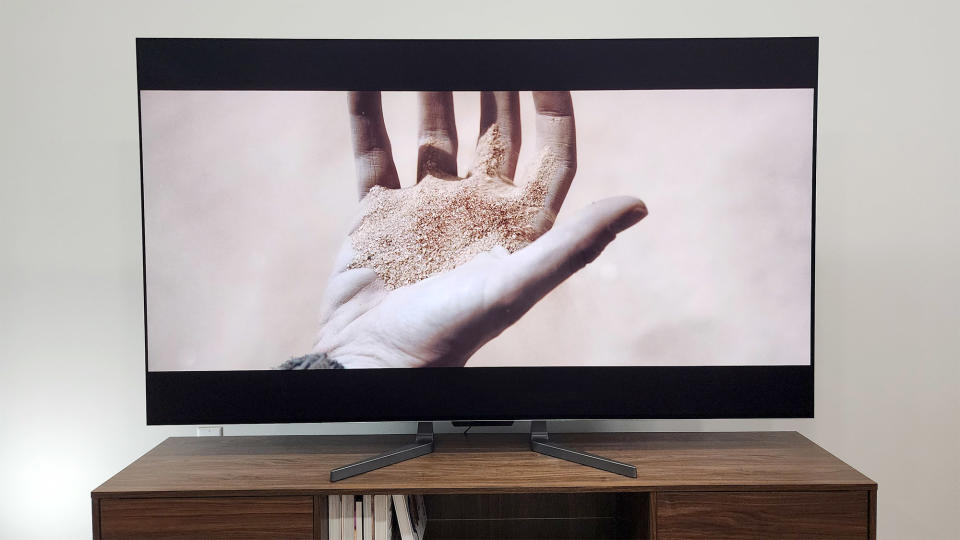
We only encountered one potential wrinkle, if an understandable one. If you or something else comes between the TV and the Zero Connect Box, you’ll block the signal and the TV will temporarily stop working. Walking past the TV is thankfully fine, but stand in place for as little as 3 to 5 seconds, and the screen will freeze or display a message about the connection being lost. Our viewing experience wasn’t drastically affected by these occasional stoppages, but we’d still recommend keeping the area between the box and the TV as unobstructed as possible.
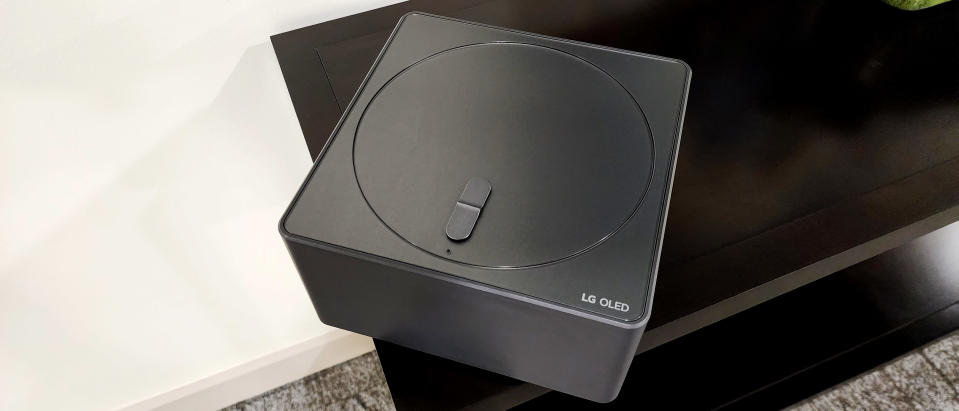
If you have to place it in front of the screen, try stationing it as high as you can to minimize interruption — though, remember, all the M3s are big so you’ll want a fair amount of distance between the screen and where you sit in order to maximize the viewing experience.
Besides that, the M3 is unquestionably an LG TV, with the high-caliber picture the company has led consumers to expect. The combination of the OLED panel, with its perfect blacks and infinite contrast, and the “Brightness Booster Max” feature (something the G3 also utilizes) results in everything looking terrific.
Watching my current suite of test movies, which includes Top Gun: Maverick, Denis Villeneuve’s Dune, The Super Mario Bros. Movie, Avatar: The Way of Water, and The Batman, revealed no clear picture missteps, with vibrant, varied colors, particularly in the joyously saturated Mario and Avatar, crisp image details evident in the action movies, and the elevated contrast of light and dark picture elements doing justice to The Batman.
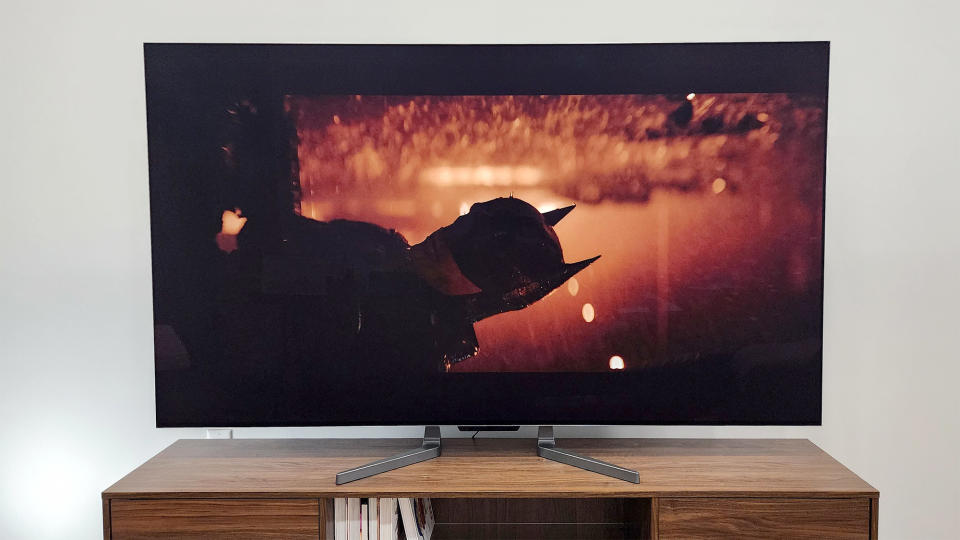
HDR content especially popped thanks to the notched-up brightness (which we’ll discuss more in the next section), though, like LG’s other TVs, the M3 lacks HDR10+ support — something we’d really like to see in a set that costs as much as this one does.
But with such eye-catching picture fidelity, which looks equally good wherever you view it from in the room, there’s still a whole lot to love about what the M3 puts on its screen.
LG OLED evo M3 review: Test Results
We always supplement our subjective viewing with objective technical tests that translate the TV’s performance into easy-to-understand numbers. For the M3, we did this with an X-Rite i1 Pro spectrophotometer, a SpectraCal VideoForge Pro pattern generator, and Portrait Displays’ Calman calibration software.
Our tests revealed the M3 as the brightest TV in its class with both SDR and HDR content, just ahead of both the G3 and the Samsung S95C. We do our primary testing in the close-to-calibrated Filmmaker Mode with a 10% window, but the M3 can display significantly higher levels of brightness — just under 1,900 nits — on smaller portions of the screen in Vivid mode. For an OLED, this is all quite impressive.
Color isn’t quite as grand, but there’s still little to take issue with. The M3’s Delta-E value, which measures the difference in color accuracy between the source and the screen, was 2.0994, which is the highest we’ve seen on the highest-end sets — but only a shade above the G3’s result, which is itself admirable. And its coverage of the Rec. 709 color gamut was within a stone’s throw of the G3’s top result. HDR color was a bit more disappointing, as the M3 covered less of both the UHDA-P3 (similar to DCI-P3) and the wider Rec. 2020 gamut than competing sets, though its results were still good.
Your eyes may not be able to tell the difference between the G3’s and the M3’s picture, so if you want a wireless set there’s still only one way to go. Unfortunately, you will have to give up a bit of color to get it.
LG OLED evo M3 review: Audio
Like other LG TVs, the M3 has passable but unexceptional sound, catching broad strokes with its 60-watt, downward-firing 4.2-channel speaker system and Dolby Atmos support, but without many exciting nuances.
With music, treble-focused selections fared best, with our soprano test track (which crests on a high B-flat) sounding sufficiently warm, even at top volume levels, with a minimum of the shrill undertones that can easily creep in. On the other hand, The Knife’s “Silent Shout,” which kicks off with a hefty bass section, lacked the more resonant thumps that really drive that song home.
Movies like Top Gun: Maverick, The Super Mario Bros Movie, and Avatar: The Way of Water, which depend on textured combinations of speech, sound effects, and music, came across fine — the M3 may not excel at any one element, but can layer them attractively without much trouble. It’s also worth pointing out that switching to AI Sound Pro boosts volume and clarity across the board, making it probably the best default sound mode to use for pretty much anything.
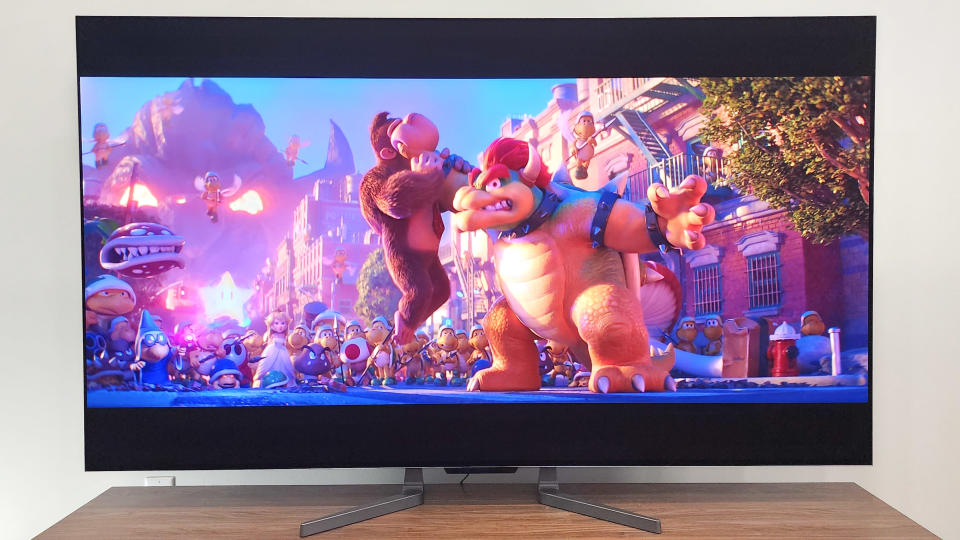
To my ears, only Sony has cracked the code for superior TV-only audio with its technology that turns the screen into a speaker. For that reason, you may want to maximize the M3’s capabilities with one of the best soundbars. Just be sure that you have a place to put one, as, depending on where you station the Zero Connect Box, under the TV may be a no-go zone this time.
LG OLED evo M3 review: Gaming
The improvements that LG (like all the big manufacturers) has made to its TVs’ gaming performance are in full force with the M3, which delivers an experience that fully satisfies, even if it doesn’t lead the pack.
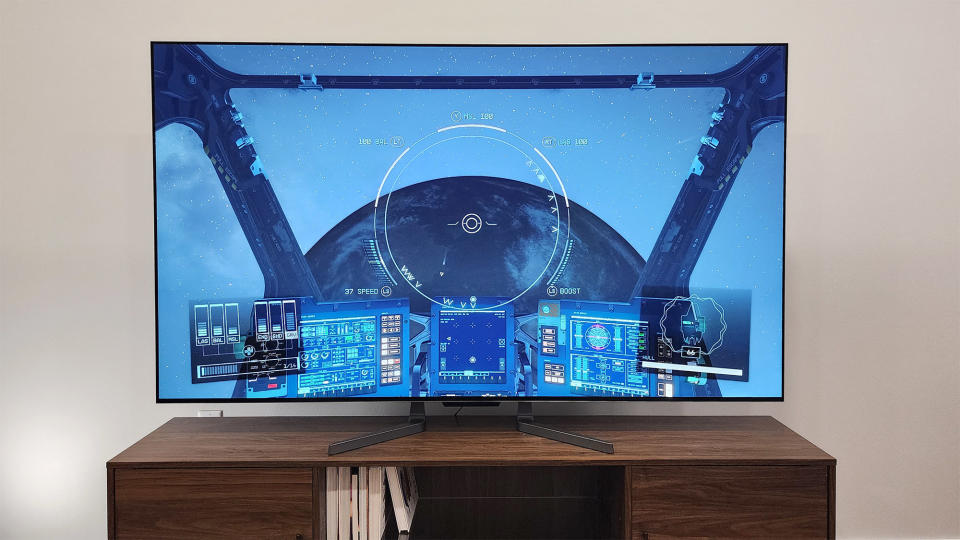
Using our Leo Bodnar 4K Lag Signal Tester, we measured its normal input lag in Game Optimizer mode as 14.1ms. That’s low (we consider anything below 20ms good), and better than anything we’ve recently seen from Sony, but not on the level of LG or Samsung’s other current TVs. By activating the boost function in the Game Optimizer, you can reduce lag to a fiery 10.5ms — but even that is just above the sub-10ms results we see from the best gaming TVs. (We’re guessing the difference is due to minute latency introduced by the wireless connection.)
Because of those three HDMI 2.1 ports on the Zero Connect Box, you get all the typical features that help with games: 4K at 120Hz, Variable Refresh Rate (VRR), and Auto Low-Latency Mode (ALLM). In addition, a pop-up bar (large, but not overly so) in Game Optimizer mode displays important performance metrics such as the frame rate, the black stabilizer level, and the status of VRR and low latency, plus direct access to various settings (such as for gaming picture modes).
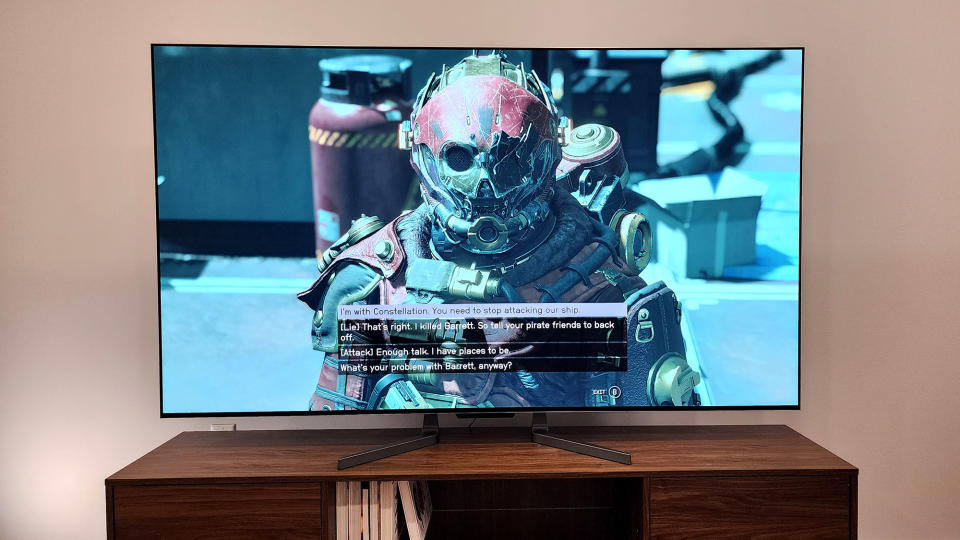
The set’s picture quality and gaming features fused to make playing Bethesda’s hot new title Starfield a stellar experience, with sharp visuals and smooth animation in exploration sequences and hand-to-hand and space combat scenes alike.
LG OLED evo M3 review: Smart features
Update: Though the M3 originally shipped with webOS 23, 2024 models of the set should ship with webOS 24, which offers additional smart and customization functionality including a larger number of user profiles and dynamic, customizable cards.
LG’s webOS smart platform remains one of the most refined and powerful on the market that isn’t Google TV. Arranging content in large blocks, and with very little littering the interface, it’s easy to find things you want to watch whether they’re surfaced in the top “marquee” position or accessible through the extensive and customizable app bar located just a few inches below.
Nestled between those two rows are Quick Cards, which link to sensible groupings of apps (Home Office, Game, Music, Home Hub, and Sports) or a Tips screen. And below those are other trending titles and recent series episodes from major services, though I never find them particularly helpful (or worth scrolling down for).
To search for something, select the magnifying glass in the top-left menu bar (which also links to your LG account, notifications, and settings), or search by voice using the remote or the built-in far-field microphone. Also integrated are the Amazon Alexa and Hey Google digital assistants, and there’s support for LG’s ThinQ smart home ecosystem and Apple AirPlay2 and Apple Home. And you can receive over-the-air 4K broadcasts with the built-in ATSC 3.0 turner.
LG Channels is LG’s entry in the “proprietary streaming platform” competition, and it’s about as distinguished as Samsung TV Plus or Sony Bravia Core. It collects live and on-demand airings from multiple sources and puts them in one convenient place, though you’re unlikely to get a lot of use out of it if you subscribe to many other streaming or live TV services (which, if you’re spending this much money on a TV, you undoubtedly do), as those are typically easier to navigate and have stronger overall content. (Not that there’s anything wrong with the Robert Stack Unsolved Mysteries or the Brian De Palma film Carlito’s Way, but it was odd to see them prominently highlighted during our review period.)
LG OLED evo M3 review: Remote
Although the last couple of years have seen a trend toward smaller remote controls, the LG Magic Remote included with the M3 has not shrunk much. Not that it needs to: Measuring just under 8 inches long and about 1.8 inches wide, it fits well and comfortably in the average hand, and offers all the keys and buttons you need in a smart, organized layout. In addition to all the usual buttons, the Magic Remote sports six shortcut keys for opening various apps: Netflix, Amazon Prime Video, Disney+, LG Channels, Sling, and Alexa.
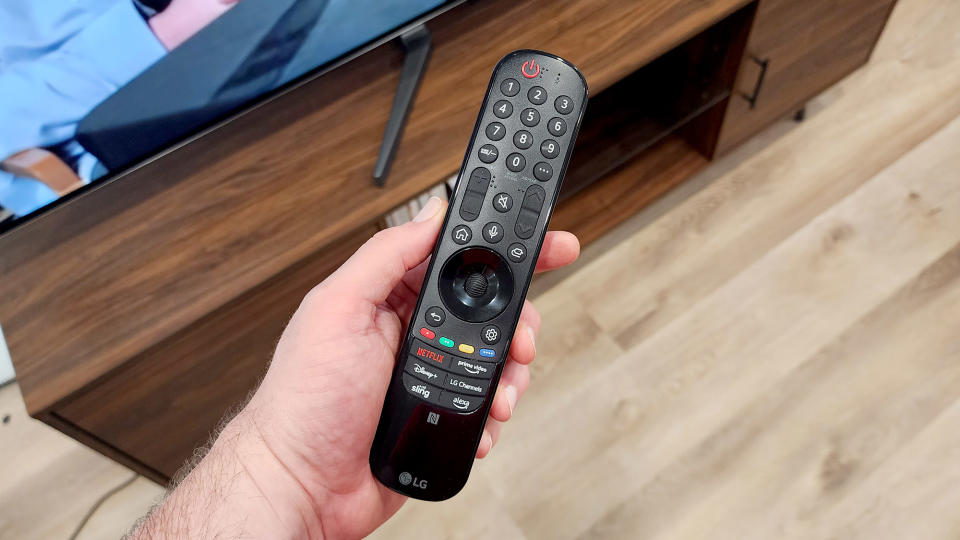
Not everyone likes the Magic Remote’s shiny black plastic housing (though it doesn’t bother me), its most controversial feature is likely the “magic” of its name, which conjures a mouselike on-screen pointer for selecting various interface elements. I always find this more of a chore than a convenience, and I don’t find the scroll wheel at the center of the control dial a fitting complement as it’s so easy to activate accidentally.
Using the dial’s buttons is just easier, quicker, and more precise for me in every situation. Even so, the Magic Remote is one of the better bundled TV controls.
LG OLED evo M3 review: Verdict
How much are wires worth to you? That’s the first, last, and only question you need to ask when considering the LG OLED evo M3. In design, features, and performance, it’s nearly identical to the LG G3, so you just need to decide whether you really want to pay an extra $1,000 (or more) to get rid of the wires. If you’re a die-hard aesthete, or you have money to burn, you might as well.
Ironically, the lack of wires — and the price it engenders — makes the M3 otherwise a harder sell. You’ll need a living room that can accommodate both its larger screen size, the necessary Zero Connect Box in compatible positioning, and any other external devices you may not be able to place close to the TV itself. This adds a layer of potential complication and is yet something else you’ll need to weigh carefully before taking the plunge.
For most people craving a high-end TV, the LG G3 and the Samsung S95C are smarter (and less-expensive) choices that won’t require giving up style while still giving you a killer (if marginally less bright) picture. The S95C even uses Samsung’s One Connect Box — ahem — to reduce the appearance and interference of wires.
If you really want to be on the bleeding edge of TV early adoption, the M3 is impressive in a lot of ways, but it ultimately represents a wall you don’t have to hit if you don’t want to.

